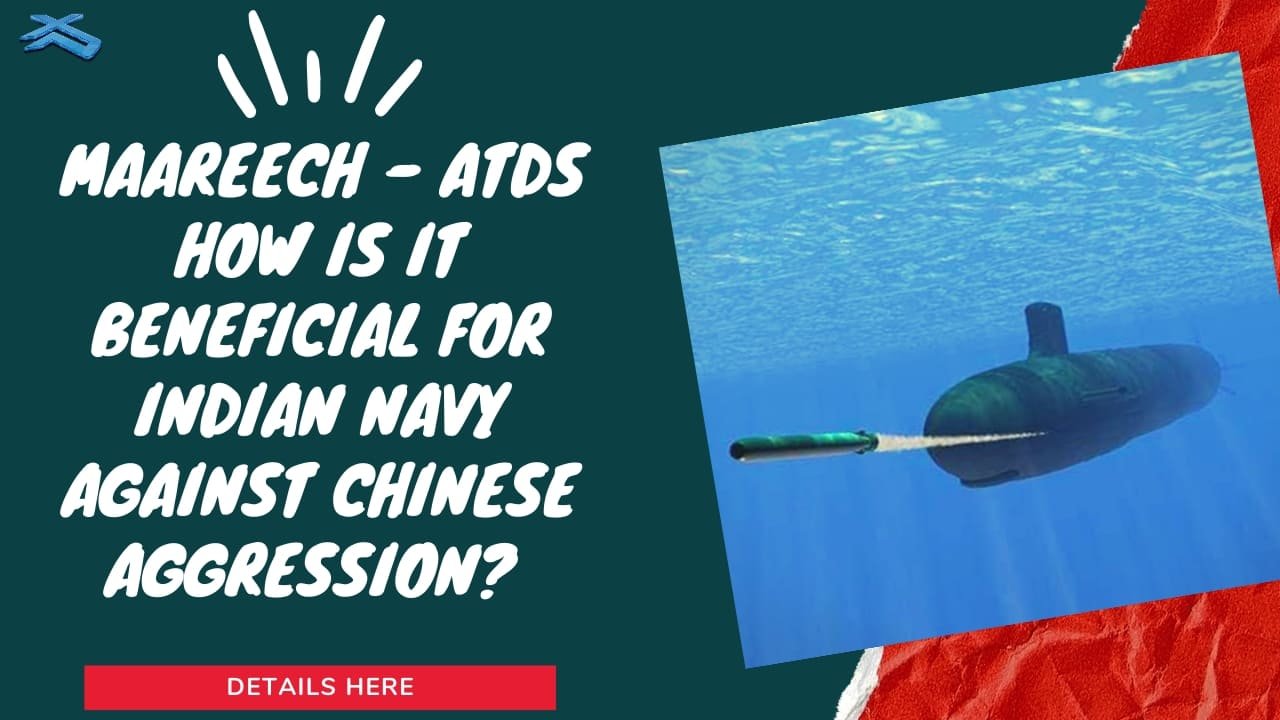What is MAAREECH – Advanced Torpedo Decoy System?

Hello Defence Lovers, As we told you in our yesterday’s Defence Update that Anti – Submarine Warfare capability of the Indian Navy has received a major boost with the conclusion of a contract for Advanced Torpedo Decoy System Maareech capable of being fired from all frontline warships. Design & Development of this anti-torpedo decoy system has been undertaken indigenously DRDO labs (NSTL and NPOL). Bharat Electronics Limited, a Defence PSU, would undertake the production of this decoy system. The prototype of this system installed onboard a nominated naval platform had successfully completed all user evaluation trials and demonstrated the features as per the Naval Staff Qualification Requirements.With this article let’s know more about this system in details and also how is it beneficial for Indian Navy against Chinese aggression in Indian Ocean.

What is MAAREECH – ADVANCED TORPEDO DEFENCE SYSTEM (ATDS)?
- “Maareech” is an Advanced Torpedo Defence System (ATDS) for surface ships. Maareech ATDS is capable of providing reliable defence mechanism against a possible torpedo attack by vintage as well as modern torpedoes. Maareech system has both torpedo detection and countermeasure capability. Core functions include automatic detection, tracking and alert of incoming torpedoes and decoying of acoustic homing torpedoes.
- The MAAREECH system is used to detect, classify and offer countermeasures against an impending torpedo attack on the ship equipped with Maareech. The system consists of a linear towed receiver array with appropriate length for the detection of torpedo signatures, towed decoy module for decoying of torpedoes, tow cable, a hydraulically operated winch system for handling the array and tow cable, Hull mounted Array sensor data interface and on-board electronics and system Software for signal processing, display & recording of sonar information
- Maareech system consists of mainly four subsystems i.e.
- Wet end system,
- Winch System,
- On-board Electronics
- System Software.
- The system offers a complete solution to detect and locate an incoming torpedo and to apply countermeasures to protect naval platform against torpedo attack.
- It was developed as a joint project of the Naval Physical and Oceanographic Laboratory (NPOL), Kochi and the Naval Science and Technological Laboratory (NSTL), Visakhapatnam.
- While 11 ships will be equipped with the full system, named Maareech Advanced Torpedo Decoy System, the remaining will get just the torpedo countermeasure capability that’s part of it.
- The survival capability of a ship is greater if the attacking torpedo can be detected early and also at a range equal to or more than the escape range of the platform under attack. A fully integrated Maareech system has both torpedo detection and countermeasure capability,’’ said R. Rajesh, NPOL scientist and spokesperson.

How is it Beneficial For Indian Navy Against Chinese Aggression in Indian Ocean?
- The Chinese Navy is rapidly pursuing global capabilities. A key area of future operations may be the Indian Ocean. Chinese submarines in particular could have a strategic impact if they were roaming those waters. From China’s standpoint this would protect vital sea lanes that will be vulnerable in any war.
- Naturally many of the world’s navies would be concerned if this were the case. Chief among them is the Indian Navy, which currently has the largest submarine fleet in the South Asia region.
- At that point Mareech ATDS offers tactical advantage by classification of the torpedo along with localisation and target motion parameters. The escape solutions are then evolved which will advise the crew of the ship on the most appropriate manoeuvre and countermeasure actions necessary to defeat the threat.
- If China were to create a permanent Indian Ocean squadron, its natural bases would be Gwadar and Djibouti. There is also the small island of Feydhoofinolhu in the Maldives, which China is developing as a resort. Planners will be concerned that it could act as a support base or monitoring station in some scenarios.
- For its part, the Indian Navy is also growing its capabilities and modifying its operating patterns to counter the threat. There is evidence that it has been testing its ability to forward deploy submarines to the Andaman and Nicobar Islands.
- This could hold the key to monitoring submarine activity in the Strait of Malacca and in this type of deployment Mareech ATDS will offers tactical adavanatge to counter threat during any conflict situation with china.





